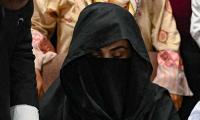China’s Belt and Road Initiative (BRI), often dubbed the New Silk Road, is one of the most ambitious infrastructure projects ever conceived. Since its inception in 2013 under the leadership of President Xi Jinping, the project has expanded beyond Asia to Africa, Oceania, and Latin America.
There are six economic corridors under the BRI initiative: the China-Pakistan Economic Corridor (CPEC). the Bangladesh-China-India-Myanmar Economic Corridor (BCIMEC), the China-Mongolia-Russia Economic Corridor (CMREC), the New Eurasian Land Bridge (NELB), the China-Central Asia-West Asia Economic Corridor (CCWAEC) and the China-Indochina Peninsula Economic Corridor (CICPEC).
So far, China has allocated an estimated $1 trillion towards its ambitious projects. Among the top seven nations involved, Russia leads with a project value of $300 billion, followed by Qatar with $250 billion, Malaysia with $150 billion, Egypt and Turkey both with $100 billion, and India and Pakistan with $40 billion each. Of the trillion-dollar investment, approximately $500 billion has been directed towards energy, while the rest has been distributed among transport, metals, agriculture, finance, real estate, and technology sectors. Despite encompassing a wide array of infrastructure initiatives, the primary focus of the Belt and Road Initiative (BRI) seems to revolve around securing China’s energy needs.
At its zenith, the initiative was regarded as the cornerstone of China’s economic involvement with the international community. According to the ‘China Belt and Road Initiative Investment Report’, 14 countries saw a 100 per cent drop in BRI engagement, including Angola, Nepal, Peru, Russia, and Sri Lanka. Furthermore, “engagements with Sub-Saharan Africa and West Asia dropped to lowest levels.” According to another expert analysis: “Nearly a decade after its inception, momentum behind China’s sweeping BRI appears to be slowing as lending slumps and projects stall.”
In 2020 and 2021, 40 recipients of BRI loans began renegotiating the loan terms. In 2022, a significant 60 per cent of China’s foreign lending was allocated to borrowers facing financial distress, a notable contrast to the mere 5.0 per cent recorded in 2010. A World Bank study revealed that between 2008 and 2021, China spent $240 billion bailing out 22 countries. As of the latest estimates, of the $1 trillion invested by China some $700 billion worth of loans are now in distress.
This surge in renegotiated loan terms and increased lending to financially vulnerable borrowers will have significant ramifications on China’s financial stability and its international reputation. As these distressed loans accumulate, concerns grow about the potential impact on China’s economy and its ability to handle the repercussions. The mounting burden of these troubled loans casts a shadow and raises questions about the sustainability of China’s foreign lending practices.
It remains to be seen how Chinese authorities will respond to this unfolding situation. Striking a balance between supporting struggling economies and safeguarding its own financial interests will undoubtedly present a complex dilemma. The year ahead will undoubtedly be critical in determining the long-term implications of these troubling trends.
The writer is a columnist based in Islamabad. He tweets @saleemfarrukh and can be reached at: farrukh15@hotmail.com
MPAs ask for their salaries and benefits to be at par with high court judges and exempt from tax
This system fosters and places premium on VIPs, facilitating VIP culture, which is alive and kicking
Imagine this waste covering over 15,500 cricket stadiums, piled three meters deep every year
If there is one thing that can be gleaned from politics today, it is that we no longer speak same language
Postman argues that “typographic mind” was yielding to “televisual mind”
Pakistan is well poised to meet opportunities that Artificial Intelligence will offer for developments in industries







